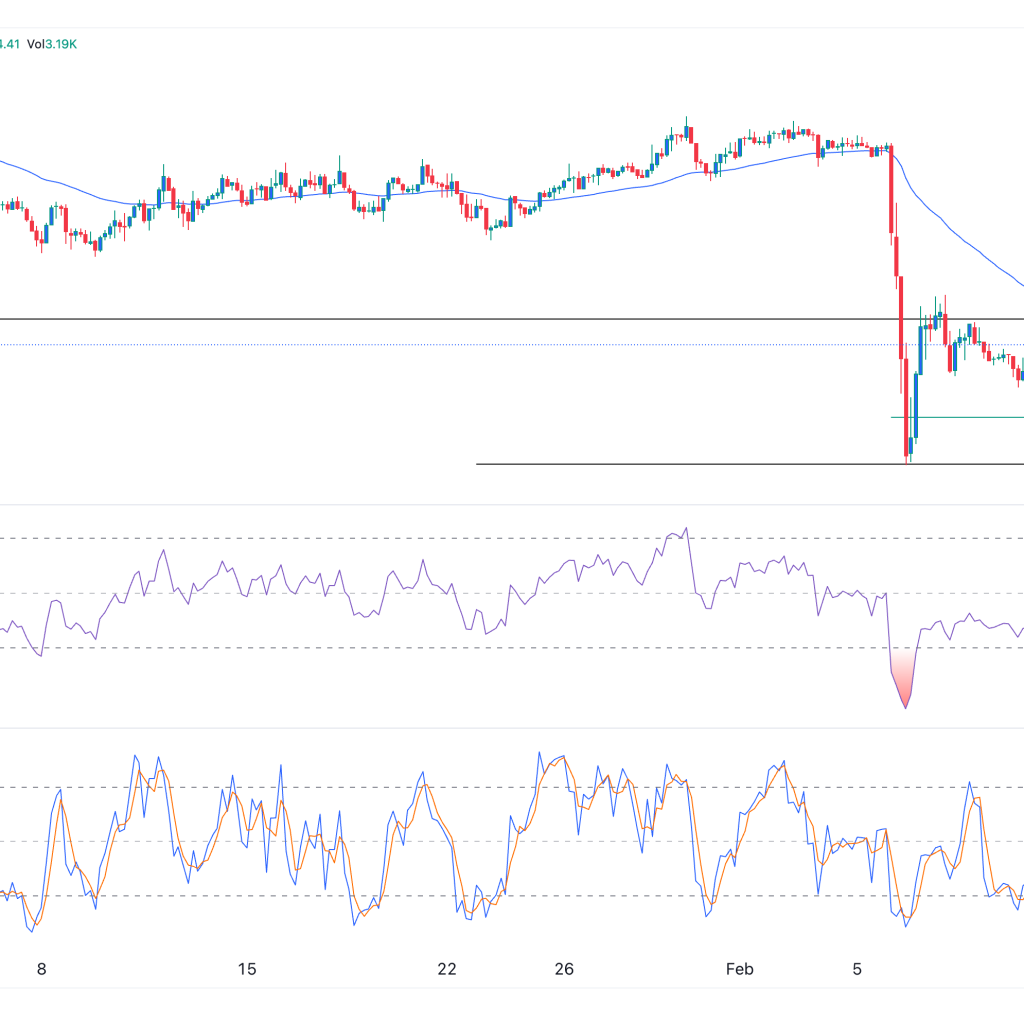Bitcoin options put/call ratio dips to 0.47 across exchanges, suggesting reduced investor interest in downside protection amidst U.S. debt ceiling debates.
In the trading scene of Asia, Bitcoin sees a minor uptick while Ether faces a slight slump. Analysts foresee a pre-FOMC market adjustment, demonstrating the sturdiness of digital assets against the backdrop of U.S. regulatory pressures and debt issues.
The decrease in the Bitcoin options put/call ratio implies a diminishing anxiety among crypto investors following the June debate among U.S. legislators regarding a hike in the national debt ceiling. In the wake of Asia’s trading day, Bitcoin has seen a minor 0.1% increase, standing at $27,109, while ETH records a marginal decline, settling at $1,880. However, as the morning hours reached US, both cryptocurrencies started to fall off the cliff, with ETH trading at $1,800 and BTC at $25,689.
BTC price trend
Analysts predict that the trend this week will involve market adjustment and stabilization ahead of the forthcoming FOMC meeting minutes set to be unveiled on June 14.
We had forecast a market adjustment and stabilization in the range of $25K to $27K, and that is exactly what we’ve seen in the past month, which resonates with the third party BTC price prediction engines. “Although we’ve yet to see a significant push towards $30K, another attempt at this critical resistance level wouldn’t come as a surprise.”
Other key opinion leaders underscore the impressive perseverance of the digital asset market amid a stringent U.S. regulatory atmosphere, all thanks to an ongoing concern about the unparalleled U.S. debt issuance.
“With traditional equity and debt markets contemplating the potential impact of the U.S. Treasury’s new debt issuance on liquidity and market prices, digital assets are taking the initiative,” an analyst noted.
Despite Bitcoin’s increasing dominance and rising fees being the focus in 2023, amidst a challenging U.S regulatory environment, Ethereum’s performance post-merge, which includes an unanticipated non-effect of staking ‘unlock,’ increased staking demand, and fulfilled deflationary promise with over 250k ETH ‘burned,’ is attracting market interest.
“The future of the $500 trillion equity and debt markets depends on the ability of central banks and treasury departments to supply vital liquidity. However, leading digital assets like Bitcoin and Ether are proactively taking steps, with the market reacting accordingly, even if institutions and regulators are slow to respond,” said another analyst.
What you need to know
The Bitcoin Put/Call Ratio is on a Downward Trend Following Recent Debt Deal
Derivatives data indicates a dip in a metric usually sensitive to an uptick when bearish sentiment surges. The current Bitcoin options put/call ratio across exchanges stands at 0.47, a considerable drop from 1.34 at the beginning of June.
This reduction suggests that fewer traders are looking to secure downside protection against future price dips. The surge in protection at the end of the previous month was probably associated with worries about the recent debt deal agreed upon by Democrats and Republicans.
This week’s outlook
Bitcoin (BTC) has declined nearly 2% over the last 24 hours and is now below $26,000 at $25,689 as investors weigh the impact of the U.S. debt ceiling deal and last Friday’s robust employment report. U.S. stock index futures remain unchanged Monday morning following last week’s substantial rally in equities. Analysts attribute this to the arrival of summer, lack of significant catalysts, and potential selling pressure triggered by any substantial selling order.
Despite this, the demand for Bitcoin among retail investors is likely to stay robust in the coming year ahead of the next halving event for the world’s largest cryptocurrency, as per a research report by JPMorgan. The recent surge in retail demand may be attributed partially to the introduction of Bitcoin Ordinals and BRC-20 tokens, according to the team of analysts. However, they believe the most significant boost to invigorating investor interest will be the anticipation of the April 2024 “halving.” Occurring roughly every four years, halving events, which are part of Bitcoin’s original code, see Bitcoin mining rewards reduced by 50%. This results in doubling Bitcoin production costs and induces “a positive psychological effect.”
Projections 101
One of the significant factors driving the price of Bitcoin (BTC) and Ether (ETH) is market sentiment, heavily influenced by external factors. As decentralized assets, BTC and ETH are affected by supply and demand dynamics. For instance, Bitcoin’s supply is capped at 21 million coins, making its price sensitive to shifts in demand. As for Ether, factors such as network upgrades and the transition to Ethereum 2.0 played a crucial role in influencing its price. These influences may not always be instant, but they do add to the foundation of each cryptocurrency, making it stronger. Furthermore, the proliferation of decentralized finance (DeFi) that primarily uses the Ethereum network, also significantly contributes to ETH’s demand and its price. It’s also important to note that institutional adoption and the entrance of mainstream investors into the crypto market have been a substantial driving force behind the value appreciation of both Bitcoin and Ether.





